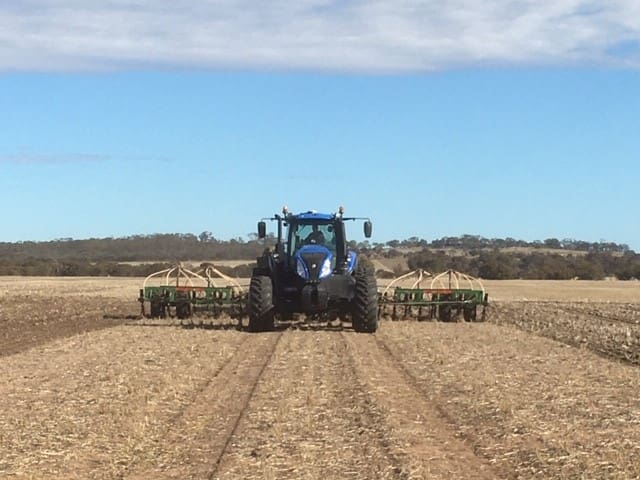FIVE Western Australian grower groups have banded together as part of a research project to better control the emerging weed, barley grass.
The winter weed has proliferated across the grainbelt in recent years, due to the adoption of minimum tillage practices, continuous cropping, herbicide resistance and seasonal variability.

DPIRD research scientist Dr Catherine Borger tests for herbicide resistance in barley grass at the department’s Northam Grains Research Facilities.
The WA Department of Primary Industries and Regional Development (DPIRD) is leading the research in WA, with co-investment from the Grains Research and Development Corporation (GRDC).
The Kellerberrin Demonstration Group, South East Premium Wheat Growers Association, Mingenew Irwin Group, Lakes Information and Farming Technology and the Facey Group are engaged in the project, with additional support from the WA No-Tillage Farming Association.
Each group is evaluating three different barley grass management strategies, in addition to a more typical control strategy.
Department research scientist Catherine Borger said low to high intensity integrated weed management strategies were being examined to control the weed.
The grower groups have compared herbicide use and spray topping in pasture, pre-emergent herbicide use, crop variety and density, among other strategies.
Dr Borger said the first year of the project had already yielded some interesting results, which will be further verified in 2020.
“Field trials showed early herbicide control was effective at Kellerberrin and at the Lakes district, while spray topping and slashing were highly effective at Mingenew,” she said.
“Pre-emergent herbicides worked well on the south coast, and at Dalwallinu.”
Dr Borger said low levels of herbicide resistance in barley grass, demonstrated by the project in 2019, proved to be a real advantage for Western Australian growers.
“While resistance testing will be conducted again in 2020 and 2021, we know our resistance levels for this weed are much lower than the eastern states,” Dr Borger said.
“It’s really easy to develop resistance to the group A herbicides that work well for barley grass but we have a window of opportunity, before widespread resistance develops, to really focus on optimal integrated weed management programs.”
Grower groups in South Australia and New South Wales are also participating in the barley grass management project, which is being led by the University of Adelaide.
Facey Group member, Wickepin grower Gary Lang, expected the project would produce some useful recommendations that would assist grain growers to boost yields and reduce control costs.

The Facey Group’s trial site is sown for a barley grass weed project near Wickepin.
“We’ve seen barley grass become a real production constraint in recent years, particularly with earlier sowing in the region, which allows some of the seed bank to escape pre-sowing weed control,” Mr Lang said.
“The situation then becomes tricky, as there are few effective in-crop herbicides available to control barley grass in cereals.
“This project is helping us to find local solutions to controlling this weed so we can best manage our paddocks to improve crop margins.”
The data and lessons learned from the demonstration sites will be collated into management case studies to be shared with local grain growers.
The research complements another national project led by the University of Adelaide, with GRDC co-investment, in which DPIRD is working to better understand the biology of emerging weeds, including barley grass, to improve control measures.
Source: GRDC

HAVE YOUR SAY